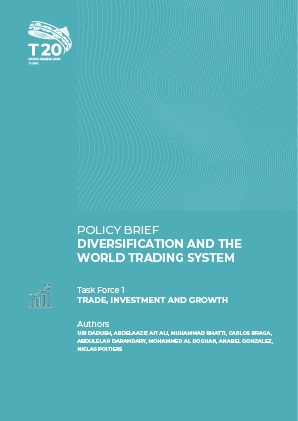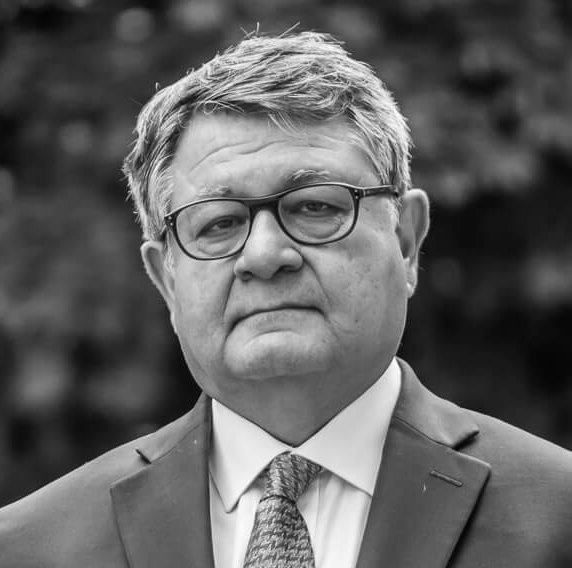Blog Post
How is the G20 tackling debt problems of the poorest countries?
The G20 Debt Service Suspension Initiative, although a partial success, has been dogged by competing interests and lack of coordination. A further push is needed to solve the coordination problem.
In April 2020, the G20, at the urging of the International Monetary Fund and the World Bank, launched the Debt Service Suspension Initiative (DSSI) to mitigate the negative financial impact of COVID-19 in the world’s poorest countries at a time when the pandemic’s medical and economic consequences were highly uncertain.
Under the DSSI, debt-service payments were suspended until the end of 2020, subsequently extended until 30 June 2021 (and new ground rules for debt restructuring for eligible countries have been articulated in a so-called ‘Common Framework’). We focus here on the initial relief window, which we will call DSSI-1. It is now clear that a misreading of the incentives facing sovereign debtors and differences between the major participants (sovereigns, multilaterals and the private sector) resulted in the DSSI delivering less relief to fewer countries than anticipated, denting the G20’s reputation as an effective forum for dealing with the financial consequences of global crises.
Our goal is to understand the factors behind this under-performance, to establish G20 accountability and to draw lessons for the future, given the G7’s interest in breathing new life into the initiative. Previously, we focused on the impact of DSSI on eligible low-income countries (ELICs) in sub-Saharan Africa (38 of the eligible 73). Here, we cover all ELICs, providing summary information on participation and relief delivered compared to initial estimates, and examining three contentious and largely unresolved issues that made burden sharing so problematic.
DSSI-1: the record
Outcomes
When the G20 launched the DSSI, it covered debt service on public or publicly guaranteed obligations (PPG) of the ELIC to bilateral sovereign (not commercial) creditors which G20 or Paris Club members (including ten countries outside the G20), estimated to amount to $12.1 billion due between 1 May and 31 December 2020. To participate, ELICs had to make a request to all their official bilateral creditors, apply for IMF funding and agree to caps on new non-concessional debt, a provision that was later relaxed subject to general guidelines on debt sustainability. Payments were to be postponed, not forgiven, keeping net present values unchanged.
By encompassing a large number of debtor countries in a short period of time and including G20 official creditors not members of the Paris Club, including China, India and Brazil, the initiative was innovative. It had the added advantage of requiring greater transparency on creditors’ lending and debtors’ borrowing from these new creditors, even though such reporting is a formal requirement imposed on all borrowers by the World Bank to ensure the Bank’s status as a senior creditor.
Figure 1 shows that debt-service covered by DSSI-1 was around a third of total debt service payable by these eligible sovereigns: $12.1 billion of a total of $32 billion. The G20 encouraged ‘voluntary’ participation by private creditors operating collectively through the Institute of International Finance (IIF). In reality this relief was not offered on a voluntary, blanket basis as desired by the G20: the repercussions of requesting relief seem to have discouraged some eligible sovereigns from requesting it altogether. The asymmetric treatment of official versus private debt also generated incentives to classify debt in the latter category particularly for creditors not bound by Paris Club classification rules. Finally, debt-service payments due to multilateral institutions lenders (including the IMF) in the reference period were almost on the scale of obligations to official bilateral creditors as classified by the World Bank.
Out of 73 eligible countries, 44 chose to participate in the DSSI, and while in principle relief for these countries could have amounted to as much as $9.2 billion (World Bank data), as of February 2021, the IMF has confirmed only $5 billion of effective relief.
Participation
Although coverage and quality in debt reporting by borrowers, specially LICs, has been a longstanding issue, creditor classification was not previously noted as an issue by the World Bank (WB) nor the G20. In the Debt Reporting System 2021, the World Bank still broadly relies on the UN System of National Accounts 2008 (SNA), which defines government and public sector entities according to who controls them and whether they sell most or all their output for profit. For the DSSI, the World Bank has provided a quantitative measure, stating that official bilateral creditors include all institutions encompassed by the SNA definition and “in which the government share is 50 percent”.
The DSSI relies on Paris Club term sheets. These require sovereign creditors to follow OECD Development Assistance Committee rules. However, this is not the case for ‘newer’ donors, among which China, India and Brazil represent a significant share of the debt service covered by the DSSI (Figure 4). Their assistance also differs in nature as the grant share is usually smaller and export support more substantial, especially for China and India. Chinese assistance is also often collateralised by commodity agreements.
While there is less known about the other new G20 sovereigns, the sheer scale of Chinese lending has led to considerable commentary on its true exposure. No comprehensive Chinese source data exist, while the range of estimates is very wide. For instance, Horn, Reinhart and Trebesch (2019), argued that half of Chinese PPG loan commitments (not outstanding exposure) in the LICs is “hidden debt” and have reached an estimated $520 billion in commitments. This may be compared to $317 billion of outstanding claims (debt outstanding and disbursed) by Paris Club creditors in 2019. The IMF found this overestimated actual amounts. The China Africa Research Initiative has reviewed loan commitments to African countries, yielding a much lower estimate (Figure 5). World Bank data underlines the importance of China as a creditor, with 63% of ELICs disclosed outstanding debt in 2019 due to China.
Another important characteristic of Chinese lending is that it is primarily intermediated by two policy banks, namely Export-Import (EXIM) and the Chinese Development Bank. For purposes of the DSSI the Chinese government has argued that the first is appropriately classified as an official creditor, but the latter is not. In 2018, the China International Development Cooperation Agency was created to mainstream and centralise aid but its role still appears limited to coordination, although reform is ongoing. Confirming the Chinese position on its aid status, at the June 2020 China-Africa summit, President Xi Jinping encouraged Chinese financial institutions to respond to the DSSI and to work out arrangements according to “market principles” for “commercial loans with sovereign guarantees”.
Private sector exposure and borrower incentives
The DSSI formally covered only official bilateral debt, but, recognising that private sector creditors had become important in several ELICs, with corresponding weight in debt service, the G20 finance ministers urged private creditors to support the initiative if requested by borrowers, and looked to the IIF to coordinate this process.
While there might have been practical and legal reasons for this difference in treatment, it is an important reason for the shortfall in the scheme’s coverage. We have seen that it allowed sovereign creditors not bound by Paris Club conventions to reclassify some of their debt as private and thereby escape the disciplines of equal creditor treatment. However, the design of the scheme also created disincentives for certain large ELIC borrowers to enrol in the DSSI, for fear of threatening longer-term market access for what was seen as short-lived debt-service relief.
These were not entirely misplaced concerns, as the credit rating agencies issued warnings on how they might view applications under the DSSI as possible indications of intent to default. Countries including Nigeria, Ghana and Kenya, with large outstanding Eurobond issues and relatively high sovereign ratings, opted out. The Kenyan and Pakistani Central Bank governors voiced concerns at the IIF in October about losing market access. These two channels occasionally reinforced each other: private creditors’ refused to delay Zambian Eurobonds payment in November 2020 on the grounds that there was no certainty that China had provided relief to Zambia.
These incentive issues aside, the rise of bond financing poses its own challenges. Bond holders are fragmented, heterogenous and largely anonymous. Also, although some private creditors, represented by the IIF, have voiced their goodwill in finding sustainable solutions to ELICs’ liquidity and debt issues, they remain set on a case-by-case approach, given the diversity of creditor and sustainability profiles. Further, reluctance of the private sector to take part in the relief initiative also reflects the reality that both official and multilateral development bank (MDB) debt are senior to private debt.
For countries already in or at risk of debt distress (22 out of the 44 DSSI participants), participating in the DSSI was more attractive. Although, fears of losing market access appear to have been somewhat tempered as higher quality African borrowers succeeded in restoring significant market access. The Kenyan government made a notable U-turn in November by announcing it would apply for the DSSI in 2021 – this move is associated with the intent to increase reliance on concessional external and domestic borrowing and also with assurances that market access could be retained, although IMF and World Bank debtor non-concessional borrowing limits apply, and that rating agencies would not downgrade if countries did not apply for commercial debt service relief.
DSSI and the preferred status of multilateral creditors
Figure 1 showed that debt service owed to multilaterals was on approximately the same scale as that owed to the bilaterals, as measured by the World Bank. Given that relief provided by bilaterals is in part deployed in servicing multilateral debt, it is not surprising that calls have come from various quarters for the multilaterals, including the IMF, to participate in DSSI. Indeed China pointedly urged the Bretton Woods institutions to “lead by example” and provide relief to ELICs considering that it was providing more relief than other donors.
The counter arguments of the multilaterals are well rehearsed and have to do with the charters of the organisations and their willingness to extend additional support to countries with poor credit prospects. Emergency support from multilateral sources (IMF, MDBs) has been reinforced but remains below financing needs[1].
In the present environment there are two counter-arguments that need to be considered however. One has been made already: multilateral debt is senior to private debt and beyond a point imparts inflexibility to the borrower’s debt structure. Second, the whole point of DSSI was speed to deal with an external shock. Even while the Fund has moved commendably swiftly with its emergency lending, these remain resources subject to conditionality at a time when unconditional resources would have been appropriate.
[1] The IMF provided $100 billion in emergency loans and the World Bank set aside $160 billion to lend over 15 months. But the World Bank estimates that low and middle-income countries will need between $175 billion and $700 billion a year. The IMF did not increase Special Drawing Rights (SDRs), which could have been a source of increased liquidity for ELICs.
Assessment: half-full or half-empty?
The DSSI is a well-intentioned G20 initiative that has tried to provide some quick fiscal support and external liquidity assistance to ELICs without the political controversy of debt write-offs in donor countries and at a time when the rich countries are themselves under severe stress and unlikely to provide direct bilateral aid.
There was little connection between pandemic-related need and near-term external debt service. At the same time, had DSSI-1 worked as originally planned, as reported by Standard and Poor’s, for 10 of the ELICs potential benefits could have exceeded 1% of GDP, rather sizeable support at a time of critical need.
The initiative, though, relied on all official creditors, including China, accepting the disciplines and templates of the Paris Club. While China agreed to these disciplines at the G20, it is not entirely surprising that it did not fully embark when it saw G7 private sector creditors and the multilaterals absent themselves from the minimal burden-sharing needed to assist the eligible countries. The branding of China Development Bank as a private lender and, thus, not subject to DSSI, is a demonstration of China’s partial engagement, which has been criticised by other creditors including multilaterals. Still, China has provided relevant debt relief to a large number of countries, which testifies to China’s interest in preserving its lender reputation and keeping its debtors solvent. However, discontent remains on the approach followed, more bilateral than multilateral, and the lack of transparency of China’s total claims and the terms under which standstill was granted.
All in all, coordination between different types of creditors remains as important as it is challenging. All creditors have an interest in the solvency and growth of their borrowers, but the DSSI has clearly shown the consequences and limitations of each group of parties trying to optimise their own situations without regard to the whole. A further push is clearly needed to solve the coordination problem before it is too late. Debt problems are piling up and developing countries can no longer wait.
Recommended citation:
Bery, S., A. García-Herrero and P. Weil (2021) ‘How is the G20 tackling debt problems in the poorest countries?’ Bruegel Blog, 25 February
Republishing and referencing
Bruegel considers itself a public good and takes no institutional standpoint. Anyone is free to republish and/or quote this post without prior consent. Please provide a full reference, clearly stating Bruegel and the relevant author as the source, and include a prominent hyperlink to the original post.









